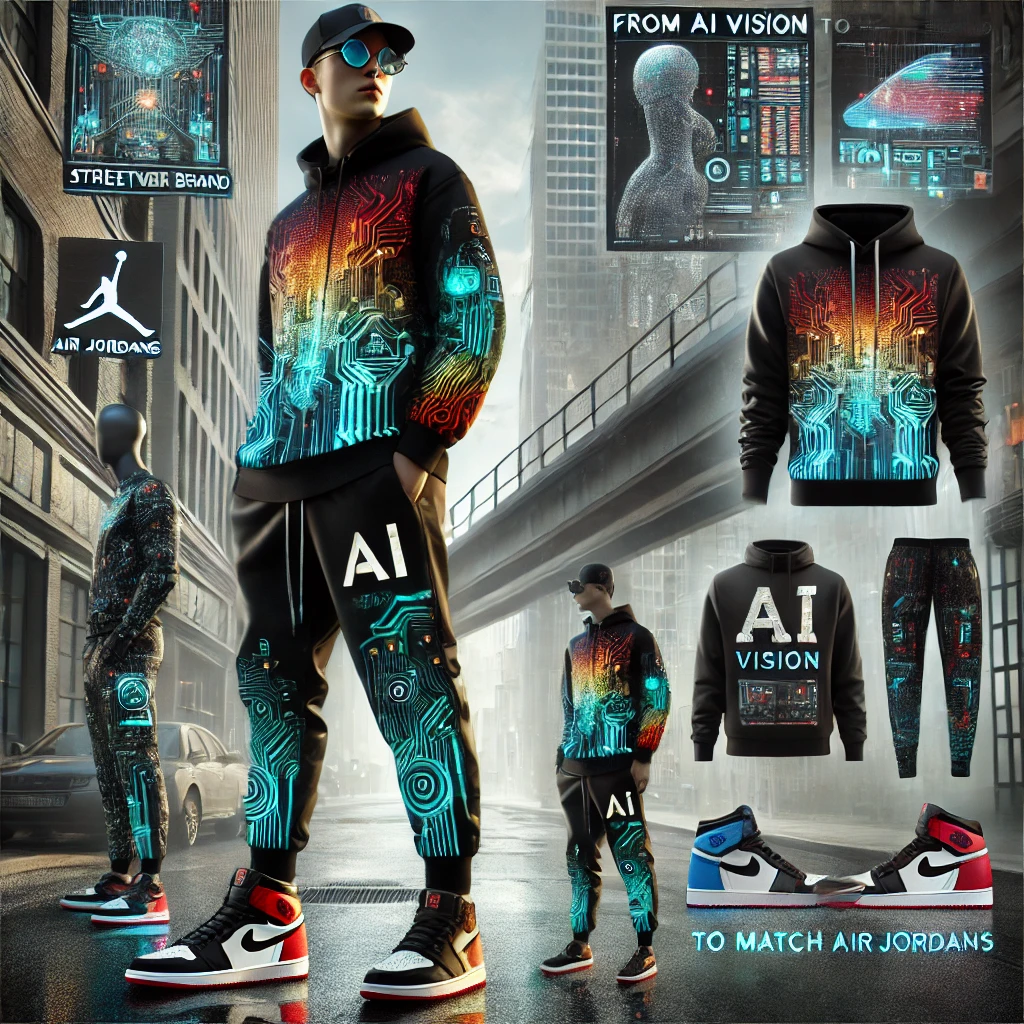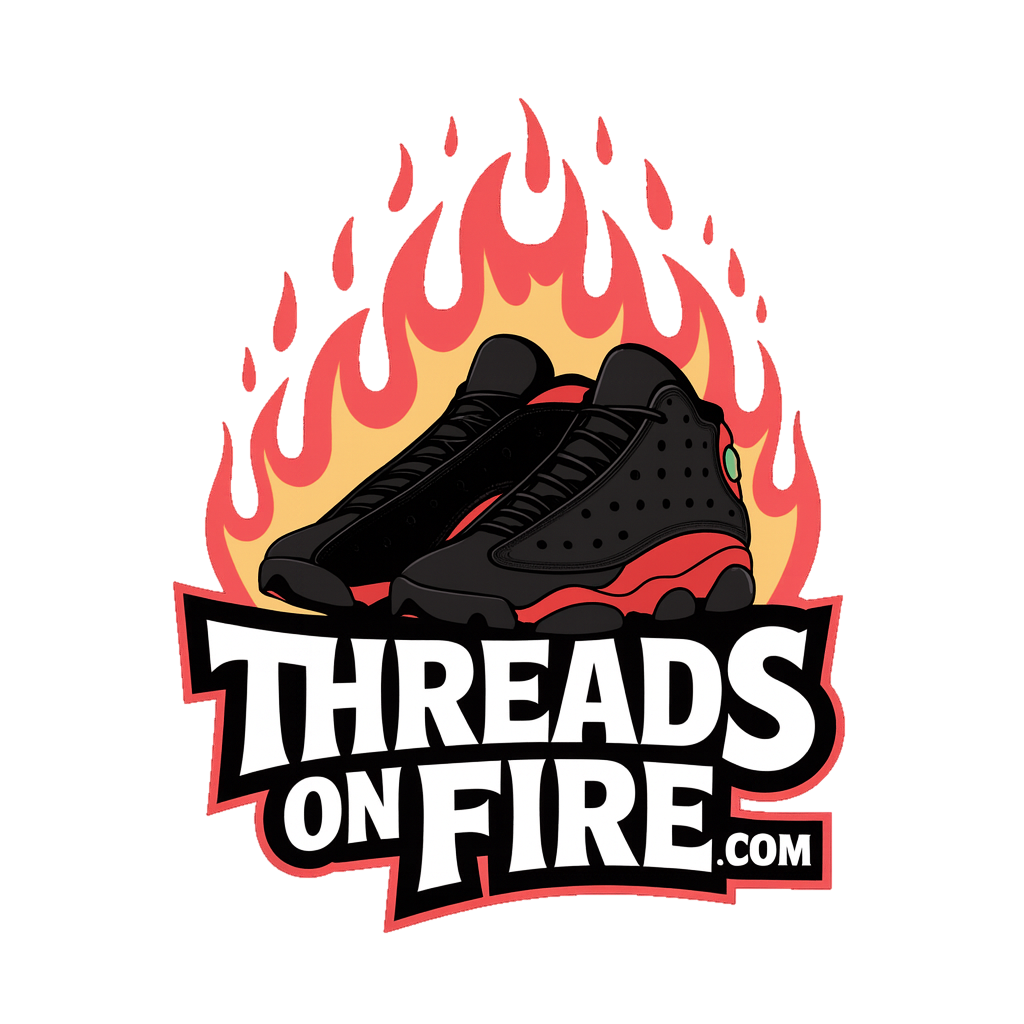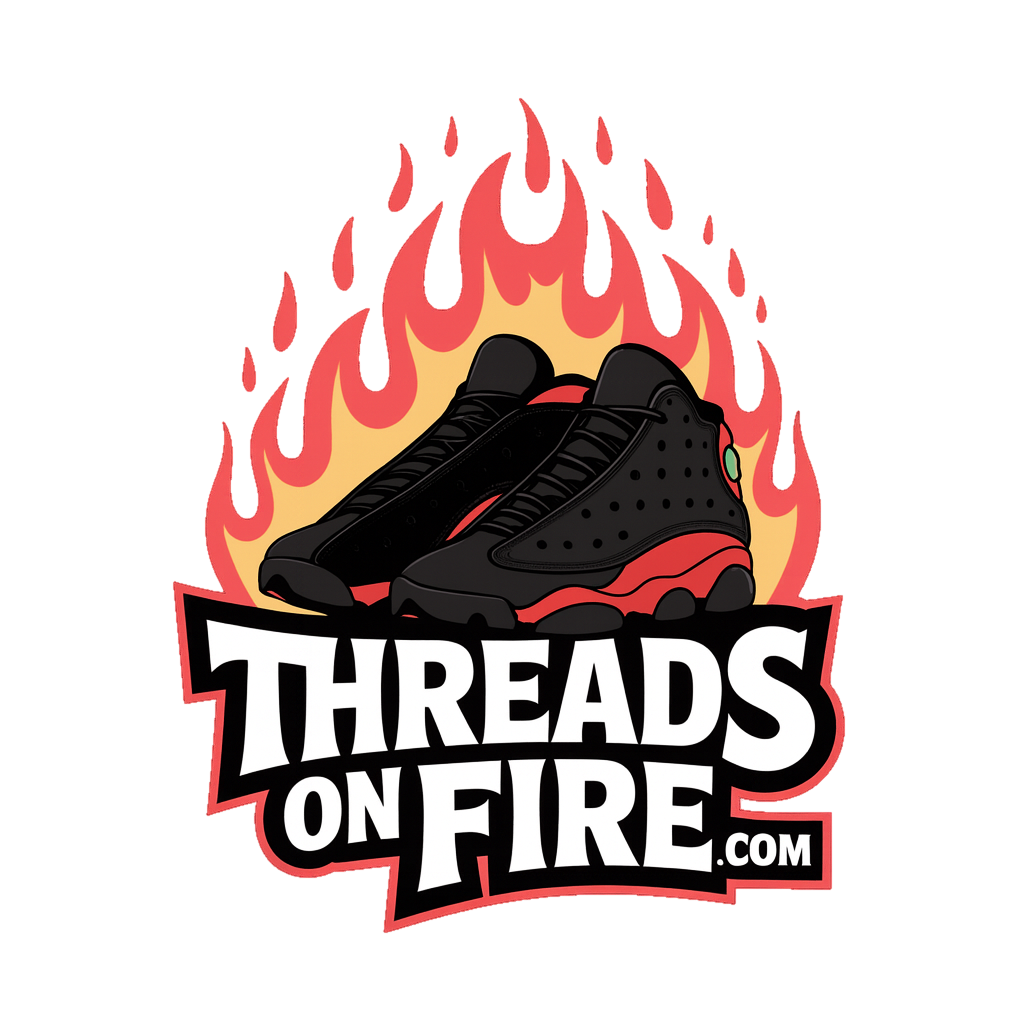
From AI Vision to Streetwear Brand: How to Build a Niche Clothing Line That Matches Air Jordans - Part 1
From AI Vision to Streetwear Empire: Choosing Your Niche and Building a Brand Identity Like Threads On Fire - Part 1
Why Your Niche Is Your Empire's Foundation
The foundation of any successful streetwear brand lies in carving out a niche that not only resonates with a specific audience but also aligns with your vision and voice. In today’s saturated eCommerce market, especially within streetwear, trying to appeal to everyone is a recipe for getting lost in the noise. Brands like Threads On Fire demonstrate that success comes from specificity. By narrowing their focus to sneakerheads—especially those passionate about matching outfits to Air Jordans—they’ve tapped into a cultural movement, not just a product market. A strong niche unites demand, cultural resonance, and brand consistency, allowing you to build products and content that hit week after week.
Top Profitable Niches in AI-Driven Streetwear
While AI offers limitless creative potential, success still demands strategic positioning. Profitable niches in AI-driven streetwear typically serve hyper-engaged communities. Sneaker-matching apparel remains one of the hottest sectors, with high demand among Jordan collectors and hypebeasts who are always looking for the next drop that complements their kicks. Other notable niches include anime-inspired fashion targeting Gen Z, futurist AI aesthetic clothing aimed at the tech-savvy demographic, Chicano or West Coast streetwear that taps into Latino pride and regional influence, and spiritually conscious streetwear that appeals to those exploring crystals, chakras, and wellness culture. Each of these markets offers potential, but only if your designs, voice, and product quality align with their culture and expectations.
How Threads On Fire Built a Jordan-Matching Lane
Threads On Fire didn't try to be everything to everyone. Instead, they focused on being the go-to brand for sneaker-matching fits—particularly those aligning with iconic Jordan silhouettes like the Air Jordan 4 Bred or the Air Jordan 13 Bred. This level of product alignment ensures they show up in the minds of sneakerheads as soon as a new colorway drops. Rather than chasing fashion trends, TOF aligned itself with a long-standing cultural obsession: the legacy of Air Jordans and the outfits that elevate them. This is a masterclass in brand positioning. By piggybacking off a multi-billion-dollar sneaker economy, TOF positioned itself as essential gear, not an optional extra.

Leveraging AI Tools to Identify Market Gaps
Before diving into design or branding, research is crucial. AI can help here just as much as in the creative process. Tools like ChatGPT can be used to simulate brainstorming sessions, evaluate underserved niches, and analyze audience behavior. You might prompt ChatGPT with questions such as, “What streetwear trends are growing among Latino sneaker collectors?” or “Give me emerging niches in Gen Z fashion culture that align with streetwear.” Meanwhile, platforms like Google Trends and Exploding Topics allow you to track and validate rising search queries. By combining qualitative insights with hard data, you ensure that your brand vision is rooted in real demand and cultural movement—not just aesthetics.
Crafting a Brand That Speaks to the Culture
Your brand isn’t just a name or a logo—it’s your voice in the community. To build real connection, your branding must reflect the style, language, and values of the audience you aim to serve. If you're targeting sneakerheads, especially young Black and Latino men aged 18–36, your brand voice should exude confidence, style, and cultural fluency. Using AI tools like Jasper or Copy.ai, you can develop consistent messaging, write product descriptions that hit, and refine your mission statement in the tone that best reflects your brand’s spirit. When done right, your brand becomes more than a business—it becomes part of the cultural narrative.
Naming Your Brand With Purpose and Precision
A strong brand name is short, memorable, and culturally aligned. It should roll off the tongue, look good on a hoodie tag, and be available across platforms. Use AI-powered name generators like Namelix or Squadhelp to brainstorm ideas, but always cross-check for availability using sites like Namecheap or GoDaddy. Don’t forget to search for trademarks through the USPTO database to avoid potential legal conflicts. Avoid naming trends that burn out quickly—timeless names always win in the long run. If your niche is sneaker-matching streetwear, your name should subtly signal that without being too obvious or gimmicky.

Creating a Logo That Reflects Your Visual Identity
Your logo is the face of your brand, and thanks to AI, creating one no longer requires a big budget. Start by defining your visual tone—whether it’s bold and gritty like Threads On Fire or sleek and minimal like a Web3 fashion brand. Then use platforms like Looka, Brandmark, or Canva’s AI Logo Creator to generate a first draft. Once you have a version that fits your style, refine it in Adobe Illustrator or hire a Fiverr designer to polish it. The key is ensuring your logo works across all sizes—from tags to Instagram icons—and communicates your brand’s essence in seconds.
Building a Visual Moodboard With Pinterest and AI
A moodboard helps clarify your creative direction and keeps your design language consistent. Pinterest is one of the most effective tools for collecting and curating inspiration across colors, textures, photography styles, and streetwear fits. Once you’ve built a board that reflects your vision, feed those visual ideas into Midjourney or DALL·E using detailed prompts. For example: “Urban male model wearing black and red hoodie set, inspired by Air Jordan 13 Bred, gritty LA backdrop, cinematic lighting.” This fusion of moodboarding and AI image generation is the new blueprint for creative direction in digital fashion.

Establishing a Voice: Street-Smart or Tech-Luxe?
Your brand voice should match your audience’s vibe. Threads On Fire uses a confident, West Coast-influenced tone that resonates with a masculine, style-driven demographic. If your brand targets the AI or Web3 crowd, a more refined, futuristic tone might make sense. Regardless of your voice, keep it consistent. Use it across your homepage, product pages, email campaigns, and even your product names. AI tools like ChatGPT can help refine tone by simulating different brand personas. Ask it to create five product names for a hoodie set inspired by Jordan 4 Breds and see which tone resonates most.
Understanding Your Core Demographic
Effective branding is rooted in a deep understanding of your audience. If you’re targeting sneakerheads, your customers are likely aged between 18 and 36, male, and deeply tapped into urban culture. Many come from Black or Latino communities, with strong influences from hip-hop, basketball, and street fashion. They value exclusivity, storytelling, and visual quality. Conduct surveys using tools like Typeform or run Instagram polls to gather direct feedback. This data not only informs your designs but helps you market more effectively, speak their language, and build trust through relevance.
Using Color Psychology to Guide Your Brand’s Palette
Color selection in streetwear isn’t just about style—it’s about emotional resonance. For example, red and black signal dominance, loyalty, and intensity—perfect for Bred-themed collections. White and grey reflect cleanliness, balance, and premium aesthetic, ideal for Cement-inspired looks. Navy and gold evoke legacy and exclusivity, great for varsity and retro collections. Choose a palette that aligns with your brand’s tone and test it across multiple product mockups. AI design platforms like Canva or Khroma can generate harmonious palettes based on mood, vibe, or cultural aesthetic.
Writing a Mission Statement With AI Templates
Your mission should clearly state why your brand exists and whom it serves. Using Jasper or Copy.ai, you can generate mission and value statements that resonate with both your niche and your voice. For example, “We built [Brand Name] for the ones who always match their kicks. For the creators, hustlers, and style kings who don’t miss. This ain’t fast fashion. This is culture.” Include this on your About Us page and social media bios to reinforce your purpose and distinguish your brand from the crowd.
Competitor Analysis: Know the Field
Before launching, you need to study the competition. Analyze their pricing, style, branding, and gaps. Threads On Fire stands out for its focus on sneaker-matching sweatsuits—a segment many overlook. Brands like Blvck Paris appeal to high-end minimalists, while HypeLand taps into anime-loving Gen Z. Each has strengths and blind spots. By identifying what others are doing—and more importantly, what they’re not—you can carve out space to innovate and dominate.
Legal and Technical Checks Before You Launch
Legal protection is key. Search the U.S. Patent and Trademark Office to ensure your name and logo aren’t already taken. Then secure a .com domain through Namecheap or GoDaddy. Lock in your social handles across Instagram, TikTok, Pinterest, and Twitter. The earlier you claim your digital real estate, the less chance someone else grabs it as your brand grows.
Testing Demand Before You Go All In
Before you invest heavily, test your concept. Use Instagram Stories to run polls: “Would you cop a hoodie that matches Jordan 4 Breds?” or “Which colorway do you rock more: Cement or Bred?” Tools like Google Forms or Typeform allow you to collect pre-launch interest and even build a waitlist. This early data not only validates demand but can help you design better products from the jump.
Writing a Brand Story That Resonates
Consumers don’t just buy clothes—they buy stories. Your brand story should weave together your origin, your mission, and what sets you apart. Make it personal, aspirational, and real. Position your brand as a movement, not a product. If you came from the same streets your target audience walks, tell that story. If you’re merging AI with culture to create wearable art, say that. Connection is currency in the creator economy.
Structuring a 1-Page Brand Strategy Framework
Use a simple one-page framework to keep your strategy sharp. Include your mission, core audience, visual aesthetic, tone of voice, top product ideas, and launch milestones. Platforms like Notion and Canva offer pre-built templates that are easy to customize. Having this doc ready helps guide every decision from product drops to social content.
Organizing Your Launch Plan With a Visual Checklist
To ensure you’re launch-ready, structure your tasks clearly. Start with niche validation using ChatGPT and Google Trends. Once your lane is locked, finalize your brand name and grab your domain. Design a logo using tools like Looka or Brandmark. Build a moodboard in Pinterest, generate AI concepts with Midjourney, and write your brand story using Jasper or ChatGPT. By breaking it down into a step-by-step system, your dream becomes real, fast.
Preparing for Part 2: AI Clothing Design
Now that you’ve built your brand identity, it’s time to create the actual drip. In Part 2, we’ll dive into using Midjourney, DALL·E, and Canva to design original hoodie sets, joggers, and full sweatsuits that align with Jordan colorways. You’ll learn how to write high-quality prompts, create matching graphics, and get your designs print-ready for POD or manufacturing.

Final Vision Locked, Now Execute
You now have the blueprint to build a brand that speaks, sells, and stands for something. With the right niche, a clear identity, and AI tools to fuel your creativity, you're already ahead of the curve. The next move? Start designing. Your first visual drop is the moment your brand becomes real in the eyes of your audience.
Ready to take the next step? Let’s create designs that turn heads and match kicks. Part 2 is where your empire starts to take form.








